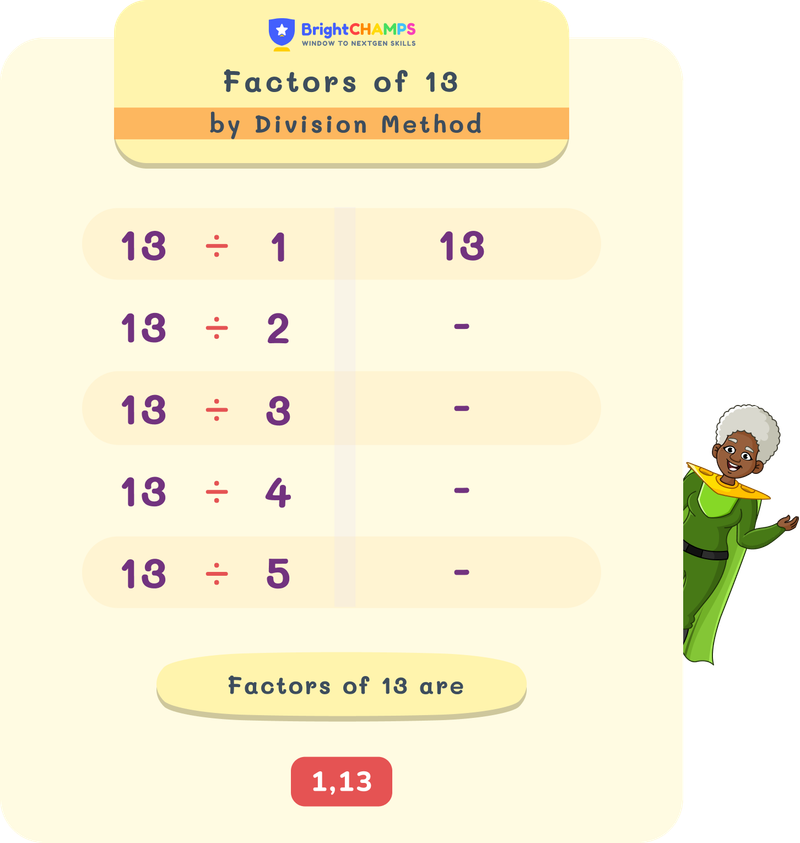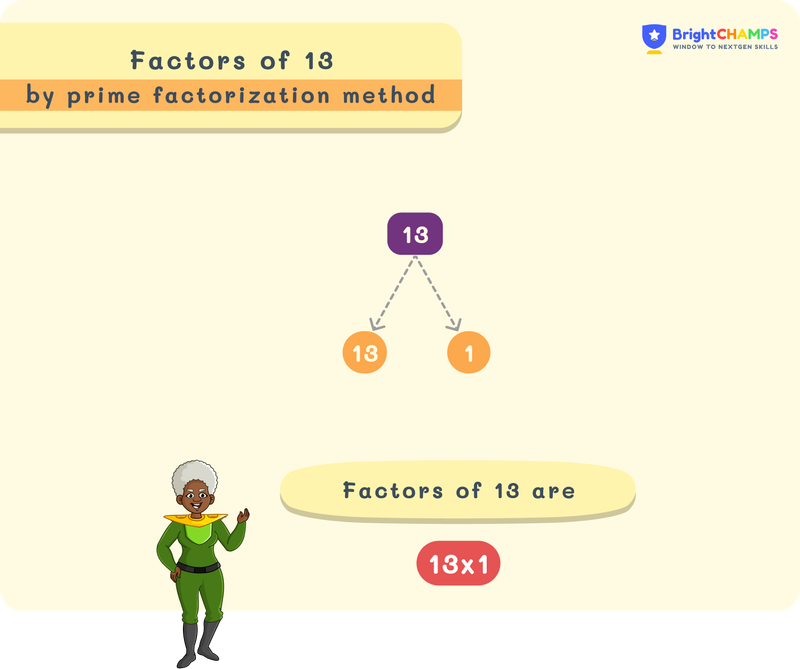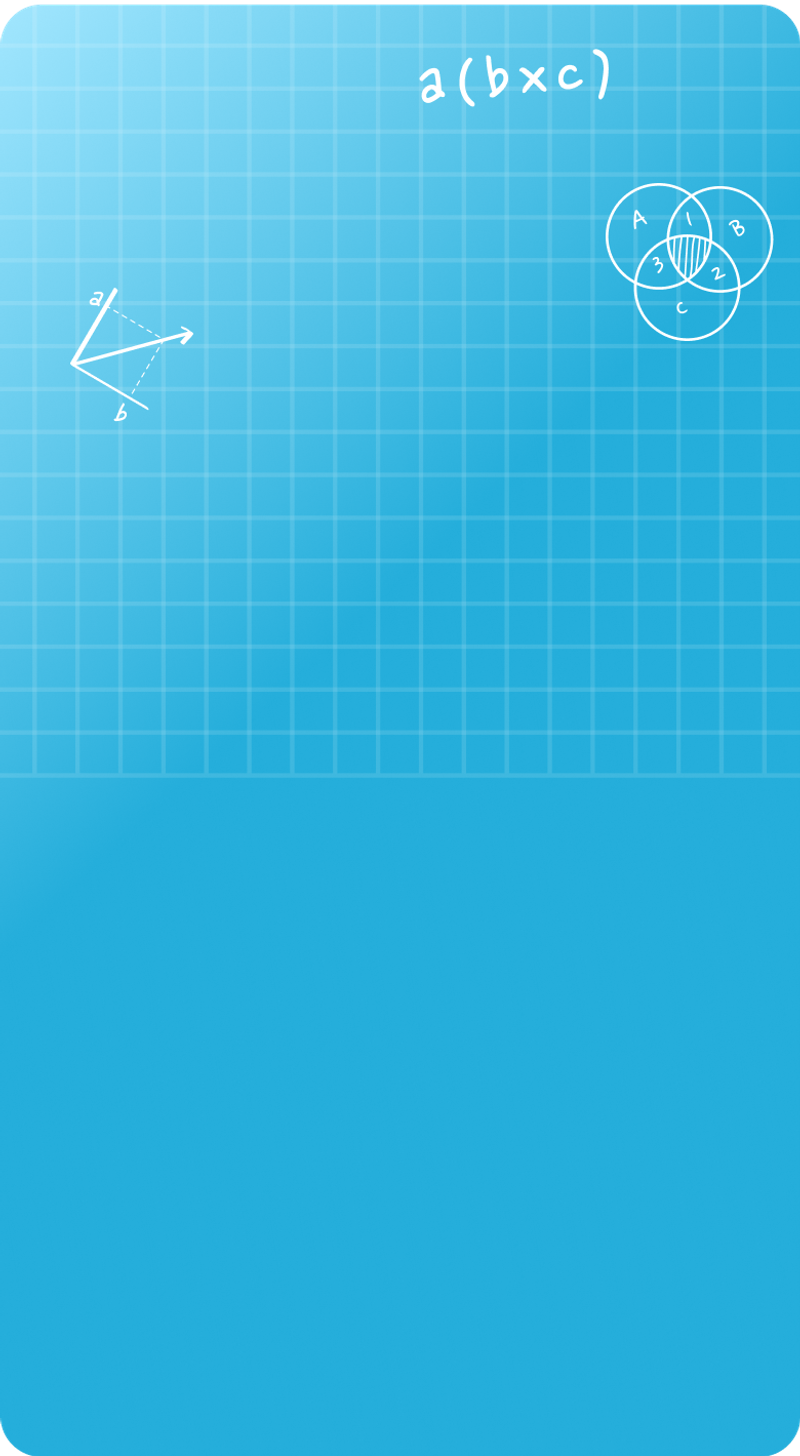Summarize this article:
 469 Learners
469 LearnersLast updated on August 5, 2025
Factors of 13

Factors are those numbers which that can completely divide the number. You can observe that, factors have a great impact on mathematical problem-solving starting from lower grades. We use factors in getting ingredients for cooking or for assorting gifts.

What are the factors of 13
As it is a prime number, there 13 has only 2 factors — 1 and 13.
- Negative factors of 13: Negative Factors of 13 are -1 and -13.
- Prime factors of 13: 1 and 13.
- Prime Factorization of 13: It is expressed as 13×1.
- Sum of Factors: The sum of factors of 13 is 13+1 =14

How to Find the Factors of 13
Children find factors in solving. While doing the calculations, most times, students forget to take 1 and the number as factors. Few methods are explained below for easy solution of factors -
- Multiplication Method
- Division Method
- Prime Factor and Prime Factorization
- Factor Tree

Finding Factors Using Multiplication Method
The multiplication method finds the pair of factors that give 13 as their product.
Multiply the factors 1 and 13, 1×13 = 13.

Explore Our Programs



Finding Factors Using Division Method
The division method finds the numbers that perfectly divides the given number 13.
1 and 13 are the only factors that the number 13 has. So to verify the factors of 13 using the division method, we just need to divide 13 by 1→ 13/1 =13 and 13 by 13→ 13/13 =1


Prime Factors and Factorization
To get the 13 as their product, we multiply a set of prime numbers, and that set is called prime factors. Prime factorization is the process of breaking down the number into its prime factors.
- Prime Factors of 13: 1, 13.
- Prime Factorization of 13: 13×1
Factor tree: A factor tree is not necessary to find the factors of 13. Since 13 is a prime number, the multiplication and division methods are enough to calculate the factors of 13. Factor trees are useful when you are dealing with composite numbers.
Factor Pairs - Factors of 13 can be written in both positive pairs and negative pairs.

Positive pair : (1,13)
Negative Pair: (-1,-13)
The product of the factor pairs will be equal to the number 13. 1×13=13 and -1×(-13)=13.

Common Mistakes and How to Avoid Them in Factors of 13
Mistakes can occur while finding the factors. Learn about the common errors that can occur. Solutions to solve the common mistakes are given below.

Factors of 13, examples

Problem 1
What will be the sum of the squares of each factor of 13?

12+132=170
Explanation
List the factors of 13: 1 and 13
Square each factor: 12 and 132
Add them: 1 + 169 = 170

Problem 2
Is 13 a factor of an even number?

Yes, 13 can be a factor of an even number. For ex: 13×14 =182.
Explanation
Divide 13 with even numbers that give multiples of 13 when the digits are added. If the remainder is zero, then it is possible to say that 13 is a factor of a given even number.

Problem 3
Can 13 be a factor of 260?

let’s divide 260 by 13 and check.
260/13 =20
Answer: 20
Explanation
We check whether a number is a factor of a given number by simply dividing it.

Problem 4
How many prime numbers are there between 1 and 13?

2,3,5,7,11.
Explanation
Prime numbers are the numbers that have two factors, which are 1 and the number itself. So, listing all the prime numbers between 1 and 13.


FAQs on Factors of 13
1. Does 13 have 3 factors?
2.Is 8 a factor of 13?
3.What are the multiples of 13?
4.Is 39 a factor of 13?

Important Glossaries for Factors of 13
- Factors - These are numbers that divide the given number without leaving any remainder.
- Prime Factorization - It involves breaking the number into its prime factors.
- Prime factors - These are the prime numbers which on multiplication together results into the original number whose prime factors are to be obtained.
- Composite numbers - These are numbers having more than two factors.
- Multiple - It is a product of the given number and any other integer.



Hiralee Lalitkumar Makwana
About the Author
Hiralee Lalitkumar Makwana has almost two years of teaching experience. She is a number ninja as she loves numbers. Her interest in numbers can be seen in the way she cracks math puzzles and hidden patterns.
Fun Fact
: She loves to read number jokes and games.

















